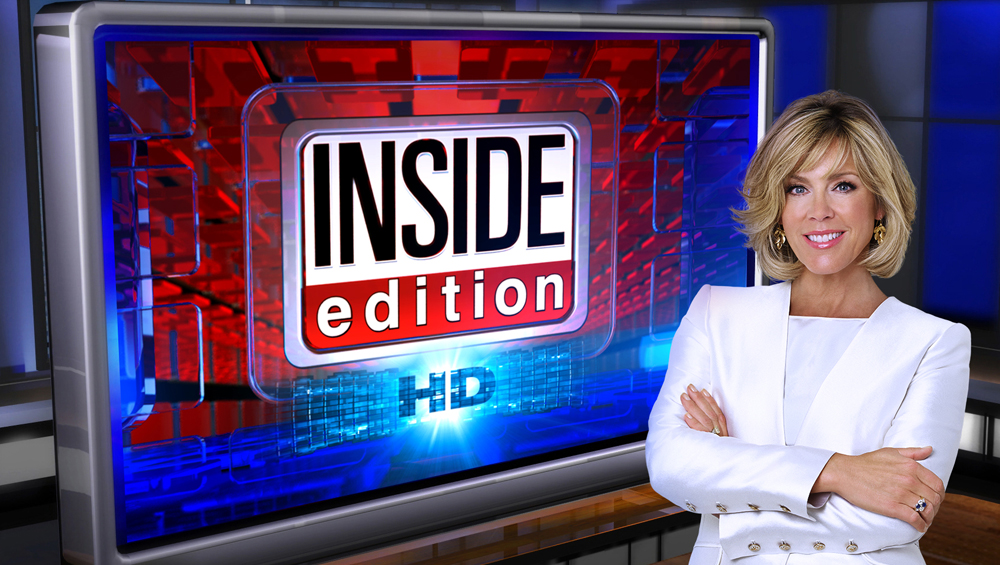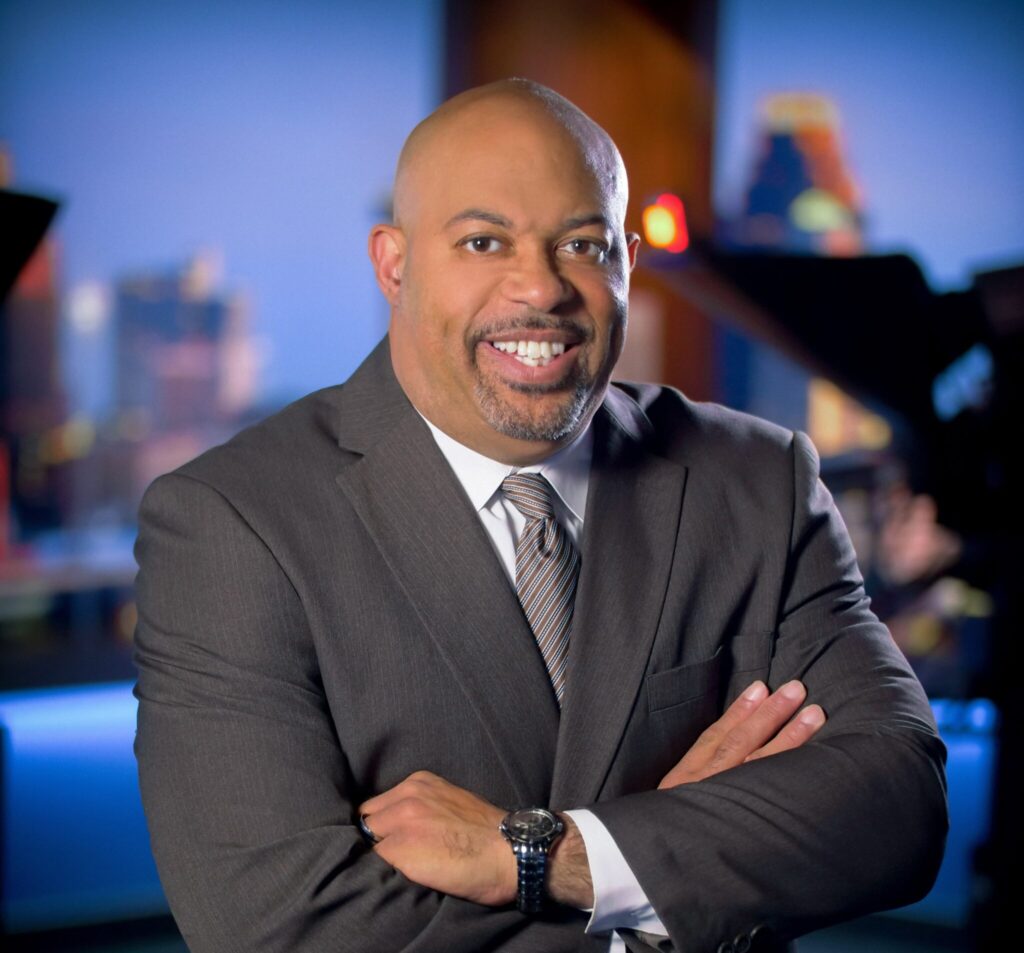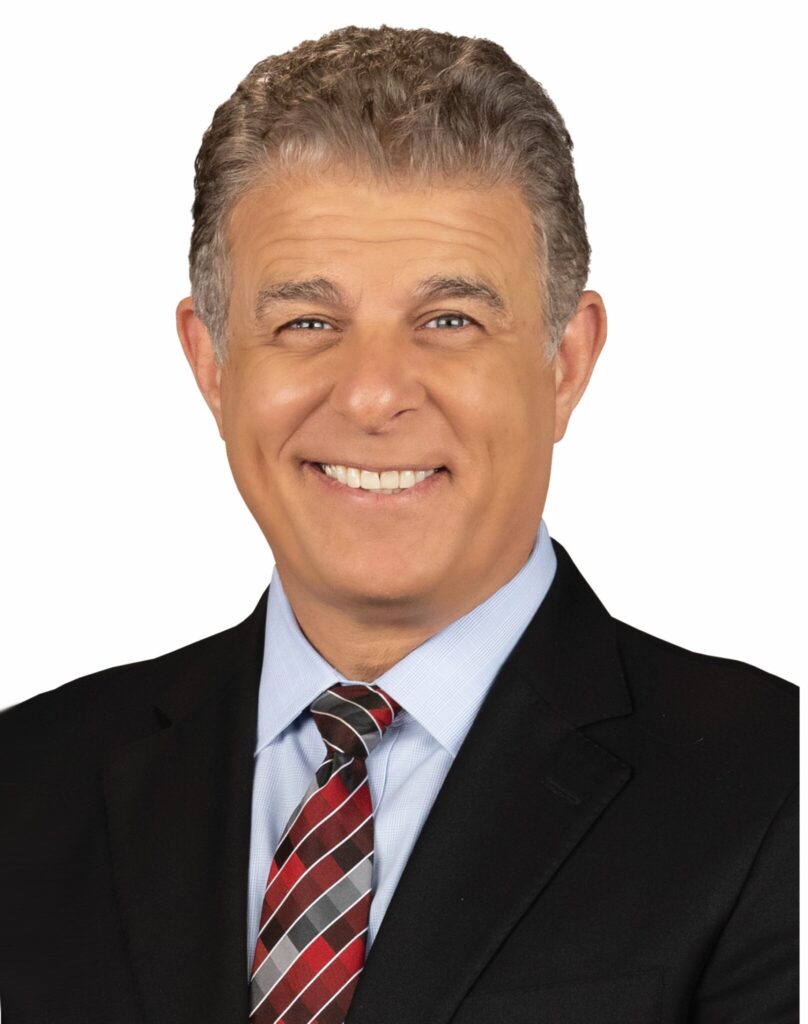
TVN’s Executive Session | Norville Marks 25 Years Anchoring ‘Inside Edition’

Among the roughly half-dozen magazine shows in syndication, CBS Television Distribution’s Inside Edition is a longtime viewer favorite, consistently running neck and neck with Entertainment Tonight.
For the past 25 years, Deborah Norville has been at Inside Edition’s helm, a tenure that will be celebrated on the show tonight. Norville came to the show in 1995 from CBS News, where she was an anchor and correspondent after previous stints including co-host of NBC’s Today and an eponymous show on MSNBC.
In an interview with TVNewsCheck Editor Michael Depp, Norville says Inside Edition’s outsider status as non-celebrity focused has helped give it a long currency among magazine shows. She recalls that among her standout experiences in a quarter century there, her weeklong “sentence” in a women’s prison was a standout for the sense of hopelessness it imparted. And she reveals that she’d love to see a streaming daily version of Inside Edition find its way to ViacomCBS-owned Pluto TV to continue to find new, cord-cutting viewers.
An edited transcript.
Congratulations on 25 years in the anchor chair at Inside Edition. Why do you think this show — and entertainment magazines — have had such staying power?
We are the only non-entertainment focused magazine show in syndication, and that is frankly one of the reasons not only why we are still here, but why we have the ratings strength that we have. One of the challenges for the guys in the entertainment space is people who are super fans are connected directly now to the celebrity that they are enamored with. You don’t really need an Entertainment Tonight or an Access Hollywood to necessarily find out anything. Those shows are challenged to find out ways to report on their core program material in a way that their viewers haven’t already seen through the direct connection they have with the celebrities.
From the beginning, we were in a different lane. Inside Edition was always meant to be that sidebar on the news of the day. I just walked out of the morning meeting where we are looking at different ways to cover coronavirus, for instance. We have a different mandate from the other shows. That is one of the reasons Inside Edition is still on the air and still such a reliable program for our stations to put on TV.
Since you began, the field has gotten more crowded and audiences can find their way to this kind of information digitally. How has that intensity and the proliferation of competition impacted the way you do your job?
I am just going to argue the basis of your question. There really aren’t more shows, there are fewer. In the early days when Inside Edition was on the air there was American Journal, A Current Affair and something Paramount did, and those were all less celebrity-centric shows. We are kind of the last man standing.
To the bigger part of your question is the competition for the attention of the viewer. The viewer today has so many demands on his or her attention and ways they can spend their time. We know there are many other ways you can spend your time besides sitting in front of your television in your family room. The challenge for us is not [just] to do a linear television show that is compelling. That is why we are a good complement to either the local news or the network evening news as we do in [some] markets. You will have already known what is going on. We are going to give you a slice of something deeper or different or related.
The other thing is we have got to be where our viewers are. We have an incredibly robust team that spends their entire working day coming up with ways to repurpose the content we are doing on the linear show or take content that maybe we didn’t have room for and producing that in a way that people on our YouTube channel will enjoy. It is a bigger job now because there are more places where the people are.
Could you drill down a bit more specifically as to how social media has changed your world as the anchor and for the show more generally?
What I do in terms of directly promoting the show is, I try not to abuse that privilege [as anchor] because it is really easy to look crassly commercial. I don’t think that serves the show and it just annoys people. On the other hand, social media has enabled Inside Edition to be discovered by an audience that probably wouldn’t find us otherwise.
There was a cute story that we did where a little girl in South Carolina is a huge fan, watches the show on TV every day and wanted to be Deborah Norville for Halloween. She took a little dress and her mother fixed her hair and they printed out the logo and used a black gym sock and made a microphone. We did a story on our show about the little girl who wanted to be me. We saw it on social media, thought that is really cute, let’s do a story. But we have 10-year-olds that are watching Inside Edition who have never turned on the TV and seen us. They watch Inside Edition on our YouTube channel.
Has YouTube become as important as the linear show at this point?
No, no. The linear show is certainly the mother ship. Inside Edition is a destination on social media, but I don’t think it would have the brand equity if there wasn’t the linear show.
What about streaming? Viewers have a lot more on-demand choices at any given moment. What does that mean for the future of the show?
I would love to see us take Inside Edition in a way that protects our station affiliates and makes this program available later in the day after our last audience has been served. ViacomCBS owns a wonderful streaming platform called Pluto. We would be a perfect asset to put on there. But that is not my pay grade, so others will have to decide.
Looking back over the years, what are some of the interviews or moments that have the biggest impact on you?
When Inside Edition sentenced me to spend a week in the toughest jail in America, it was not my choice, but it was an opportunity. My job was to figure out how to make this not just a publicity stunt [but] to find the story to be reported there. At that time, the incarceration rate in local jails was increasing roughly 9% per year, and what I was able to show was that there wasn’t anything going on inside those walls that was going to encourage the people who were there to make their choices any differently.
I got into journalism because I believe in the power of democracy [and] individuals who feel strongly about something to make a difference. I don’t pretend to have the answers, but my job is to find the people who think they might. This was the first time I had ever reported a story where I didn’t see a possible solution. I couldn’t see a way to help them make different choices, so I left that story kind of depressed. And that’s not me.
Another story that stands out is of a woman named Cathy Giuisti, who was diagnosed many years ago with an incurable form of cancer called multiple myeloma and her identical twin sister had reached out to me. They were trying to raise money to find a cure, and these two very bright women — one had gone to Harvard Business school, the other had gone to Yale Law School — realized that they will never raise enough money to pay for a cure. But they might be able to raise enough money to seed promising research. If the research really panned out then big pharma would come and take it the rest of the way.
There are now seven drugs in widespread use to try to treat multiple myeloma, a disease which when she was diagnosed was diagnosis to death within four years. She is now 20-plus years past her diagnosis. She has been named one of Time magazine’s 100 most influential people. I love stories like that.
What’s next for you? Is the anchor chair at Inside Edition still a comfortable fit or are you looking ahead to something else?
Well, I don’t have a chair. Are you kidding? I stand there. I am very happy anchoring. I feel very grateful to all the viewers who watch us every day and to the team here that puts it together. You know, I am the one who is getting all the publicity, but the fact of the matter is, there are 120, 150 people who make this happen every day and the only reason I get to be there for 25 years is because they have been showing up for work, too. So it is really a celebration for everybody.
























Comments (1)
[email protected] says:
March 6, 2020 at 12:51 am
Congrats on 25 years on Inside Edition Deborah and American Journal was a spin-off of Inside Edition with long time fill in anchor Nancy Glass. I’m thinking the other show was Hard Copy but I could be wrong on that.